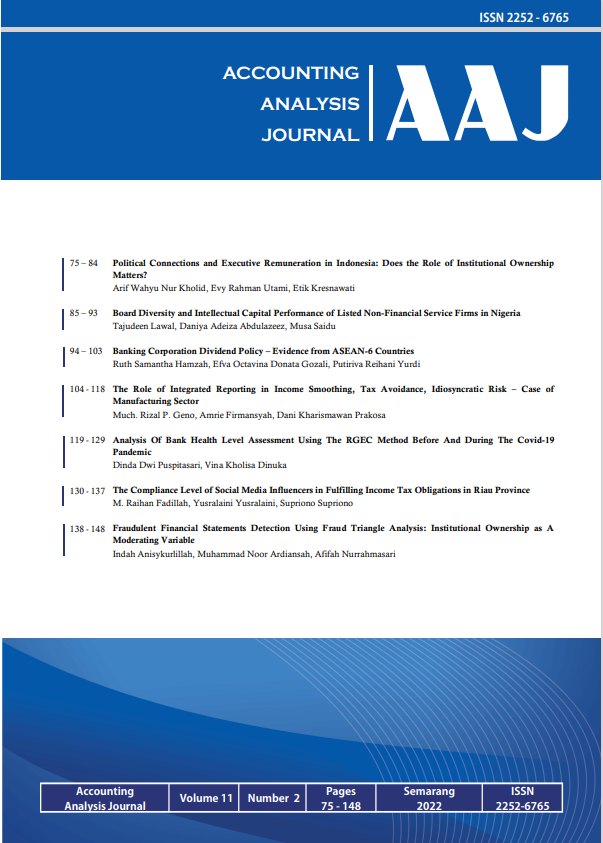Analysis Of Bank Health Level Assessment Using The RGEC Method Before And During The Covid-19 Pandemic
##plugins.themes.academic_pro.article.main##
Abstract
Purpose : The study aims to determine the composite ranking and the condition of whether there are differences in bank health level before and during the Covid-19 pandemic in conventional commercial bank companies in Indonesia Stock Exchange (IDX) in 2019-2020.
Method : Descriptive quantitative research with comparative quantitative is applied in this research method. This study also uses the sign-Wilcoxon test. The data used is annual financial report for 2019-2020. There are 39 banks went public on the IDX in 2019-2020 as research sample in this research.
Findings : The research result proved that the health of conventional commercial banks before and during the Covid-19 pandemic is included in Composite Rating 2 (PK-2), which reflects the bank’s general health condition. There is no difference in bank health level before and during the Covid-19 pandemic for the ratio of NPL, GCG, and ROA. However, there are differences in bank health level before and during the Covid-19 pandemic for the ratio of LDR, NIM and CAR.
Novelty : The research contributes a new finding regarding analysis of bank health level assessment using RGEC method with comparing the bank health level before and during the Covid-19 Pandemic whereas the previous study merely research on sharia or conventional banks but before Covid-19 pandemic comes. This research finding directly implicates to the bank management to care about their performance, especially regarding to the bank health as one of signal for the investor who has their interest to the bank.
Keywords : Bank Health Level; Covid-19; Financial Ratio; RGEC
